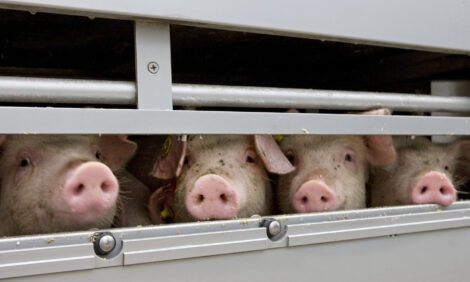



Study Finds Porcine PARV4 in Pigs in US
US - A novel parvovirus in pigs, porcine PARV4, has been discovered in pigs in Asia and Europe and now new research has found it in pigs in the US.The study, by Chao-Ting Xiao, Luis G. Gime´ nez-Lirola, Patrick G. Halbur, Tanja Opriessnig from the Department of Veterinary Diagnostic and Production Animal Medicine, College of Veterinary Medicine at Iowa State University in the US was set up to investigate whether porcine PARV4 is present in the US pig population.
The research team used a newly developed quantitative real-time PCR assay for the tests and found porcine PARV4 in a number of states in the US and increasingly in older pigs.
Lung tissues obtained from 483 pigs across five different age groups with varying disease manifestations (reproductive failure/abortion, enteritis, respiratory disease, systemic/central nervous disease) were tested.
While porcine PARV4 DNA was not detected in fetuses (0/28) or suckling pigs (0/15), it was detected in pigs from 10 of 16 states with increasing prevalence rates in the older pigs.
Specifically, porcine PARV4 DNA was detected in 5.6 per cent (10/178) of the nursery pigs, 18.7 per cent (44/235) of the grow-finish pigs
and 22.2 per cent (6/27) of the mature pigs tested.
Genome sequence comparison and phylogenetic analysis of US porcine PARV4s confirmed that they have similar genomic characteristics and 97.6–99.1 per cent sequence identities to available porcine PARV4 sequences from China, Romania, and the UK Porcine PARV4 was identified in 14.4 per cent of respiratory cases and in 11.6 per cent of cases with a history of systemic/central nervous system disease.
As strict non-diseased controls were not included in the study, a possible role of porcine PARV4 in these disease manifestations remains inconclusive, the research team said.
The researchers said that to their knowledge, this is the first description of porcine PARV4 in the US pig population.
The study has been published in Veterinary Microbiology.
Further Reading
| - | You can view the full report by clicking here. |








